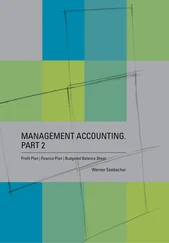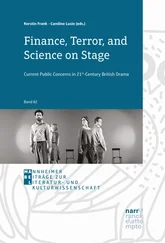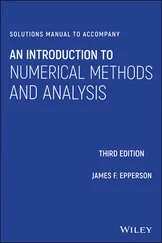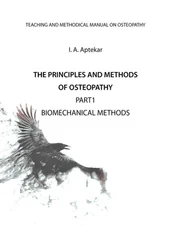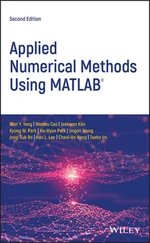DANIEL J. DUFFY

This edition first published 2022
Copyright © 2022 by John Wiley & Sons, Ltd.
Registered office
John Wiley & Sons Ltd, The Atrium, Southern Gate, Chichester, West Sussex, PO19 8SQ, United Kingdom
For details of our global editorial offices, for customer services and for information about how to apply for permission to reuse the copyright material in this book please see our website at www.wiley.com.
All rights reserved. No part of this publication may be reproduced, stored in a retrieval system, or transmitted, in any form or by any means, electronic, mechanical, photocopying, recording or otherwise, except as permitted by the UK Copyright, Designs and Patents Act 1988, without the prior permission of the publisher. Wiley publishes in a variety of print and electronic formats and by print-on-demand. Some material included with standard print versions of this book may not be included in e-books or in print-on-demand. If this book refers to media such as a CD or DVD that is not included in the version you purchased, you may download this material at http://booksupport.wiley.com. For more information about Wiley products, visit www.wiley.com.
Designations used by companies to distinguish their products are often claimed as trademarks. All brand names and product names used in this book are trade names, service marks, trademarks or registered trademarks of their respective owners. The publisher is not associated with any product or vendor mentioned in this book.
Limit of Liability/Disclaimer of Warranty: While the publisher and author have used their best efforts in preparing this book, they make no representations or warranties with respect to the accuracy or completeness of the contents of this book and specifically disclaim any implied warranties of merchantability or fitness for a particular purpose. It is sold on the understanding that the publisher is not engaged in rendering professional services and neither the publisher nor the author shall be liable for damages arising here from. If professional advice or other expert assistance is required, the services of a competent professional should be sought.
Library of Congress Cataloging-in-Publication Data is Available:
ISBN 9781119719670 (Hardback)
ISBN 9781119719724 (ePub)
ISBN 9781119719694 (ePDF)
Cover Design: Wiley
Cover Image: © windesign/Shutterstock
This book is a detailed introduction to the mathematical theory and foundations of ordinary and partial differential equations, their approximation by the finite difference method and applications to computational finance.
Major benefits of the book are:
Step-by-step, incremental build-up of the material.
Examples and algorithms worked out in detail. Opportunity to modify the algorithms and extend them to your own applications.
Modern, state-of-the art numerical schemes for PDEs in finance.
Guidelines on C++ coding (C++11 to C++20); the book is the ideal companion to the author's book Financial Instrument Pricing Using C++ (second edition, 2018).
The book is structured so that the material can be applied to a range of existing and new application areas.
We resolve a number of outstanding issues and improve several less-than-optimal numerical methods in finance.
We have divided the book into five parts, with each part addressing a single major issue.
Part A( Chapters 1to 7) introduces the mathematical and numerical analysis concepts that are needed to understand the finite difference method and its application to computational finance. The main reason for writing the chapters is to make the book as self-contained as possible and to introduce and define standardised notation and results that we use in later chapters. Furthermore, the presented material can also be used as a standalone reference.
We realise that some readers will not be familiar with all of the building blocks that are needed to write finite difference schemes for the Black–Scholes PDE; for this reason, Part Awas written to resolve this issue. We identify and discuss all the steps to design and implement a finite difference solver for one-factor finance PDEs. To this end, we take an incremental and single responsibility approach by focusing on one major topic in each chapter:
Initial value problems and boundary value problems and their numerical approximation.
Vector spaces, matrix theory and numerical linear algebra.
My first Crank–Nicolson and Alternating Direction Explicit (ADE) methods for the one-factor Black–Scholes PDE.
Finally, Chapter 1is devoted to major concepts (such as continuity and differentiability) in real analysis that permeate the book, and for this reason it is important to understand them.
Part Acan be used by readers with no prior knowledge of partial differential equations or the finite difference method. It can be used as a mini-course or mini-project to learn the material.
Part B( Chapters 8to 13) discusses a number of rigorous mathematical techniques relating to boundary value problems and initial boundary value problems for elliptic and parabolic partial differential equations in two-space variables. The goal is to identify and elaborate the underlying theory to unambiguously specify these problems before mapping them to a numerical solution, thereby filling some ‘mathematical gaps’ in current practice. In particular, we develop strategies to preprocess and modify a PDE before we approximate it by the finite difference method, thus removing ad hoc and heuristic tricks that are often used to arrive at (hopefully) robust numerical schemes.
The chapters in this part fill a major gap in the application of PDE/FDM to finance. In general, most of the finance literature glosses over the niceties of analysing PDEs mathematically before approximating them using the finite difference method. The new approach resolves many of issues and heuristic approaches. Some new improvements for two-factor PDEs are:
Transform a PDE with a mixed derivative term to one in which this term has been removed (the canonical PDE).
Why domain transformation is better than domain truncation in general.
A rigorous set of mathematical techniques (Fichera theory, energy estimates) to discover the correct boundary conditions for finance problems.
The deep relationship between PDEs and stochastic differential equations (SDEs). We discuss formulations and results that are important in calibration applications.
Part Bprepares the way for a seamless route from PDEs to robust and understandable finite difference schemes that approximate them. It eliminates much trial-and-error experimentation. In a sense the topics in Part Bserve as a reference for the more hands-on topics in later chapters. At the very least, it is important to be aware of the main results.
Part C( Chapters 14to 17) introduces the mathematical background to the finite difference method for initial boundary value problems for parabolic partial differential equations. It encapsulates in one place all the background information that is needed to construct stable and accurate finite difference schemes for time-dependent problems. The schemes will be applied to one-factor and two-factor finance PDEs in later chapters. The advantage is that the chapters discuss finite difference schemes for generic PDEs that can then be applied to finance PDEs. We also devote two dedicated chapters to Sensitivity Analysis , and we propose at least five methods to compute the derivatives of solutions of initial boundary value problems with respect to underlying parameters. In finance, these are sometimes called option greeks .
Читать дальше




